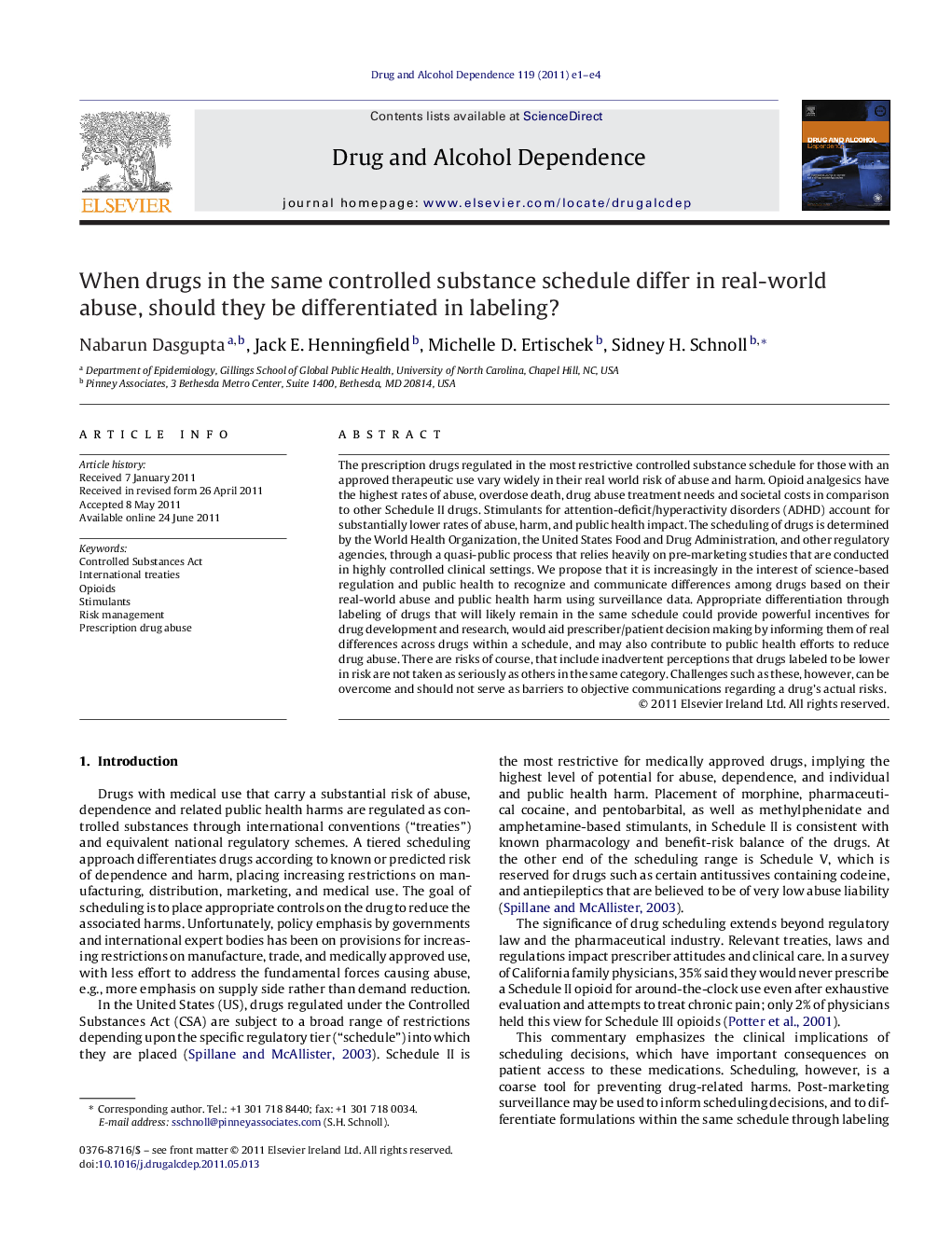| Article ID | Journal | Published Year | Pages | File Type |
|---|---|---|---|---|
| 7508513 | Drug and Alcohol Dependence | 2011 | 4 Pages |
Abstract
The prescription drugs regulated in the most restrictive controlled substance schedule for those with an approved therapeutic use vary widely in their real world risk of abuse and harm. Opioid analgesics have the highest rates of abuse, overdose death, drug abuse treatment needs and societal costs in comparison to other Schedule II drugs. Stimulants for attention-deficit/hyperactivity disorders (ADHD) account for substantially lower rates of abuse, harm, and public health impact. The scheduling of drugs is determined by the World Health Organization, the United States Food and Drug Administration, and other regulatory agencies, through a quasi-public process that relies heavily on pre-marketing studies that are conducted in highly controlled clinical settings. We propose that it is increasingly in the interest of science-based regulation and public health to recognize and communicate differences among drugs based on their real-world abuse and public health harm using surveillance data. Appropriate differentiation through labeling of drugs that will likely remain in the same schedule could provide powerful incentives for drug development and research, would aid prescriber/patient decision making by informing them of real differences across drugs within a schedule, and may also contribute to public health efforts to reduce drug abuse. There are risks of course, that include inadvertent perceptions that drugs labeled to be lower in risk are not taken as seriously as others in the same category. Challenges such as these, however, can be overcome and should not serve as barriers to objective communications regarding a drug's actual risks.
Keywords
Related Topics
Life Sciences
Neuroscience
Behavioral Neuroscience
Authors
Nabarun Dasgupta, Jack E. Henningfield, Michelle D. Ertischek, Sidney H. Schnoll,
